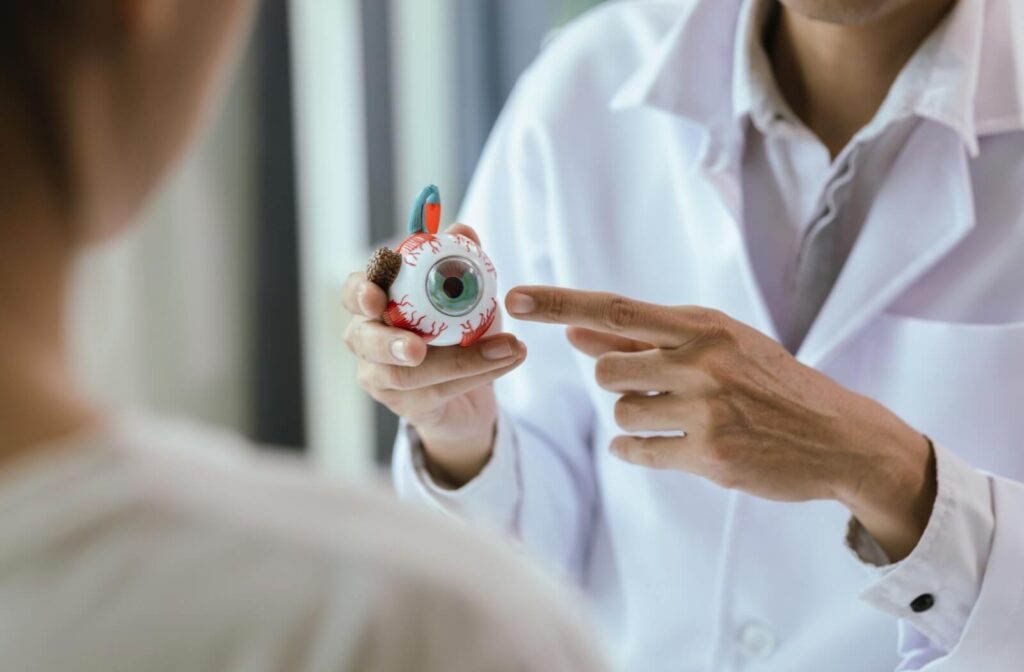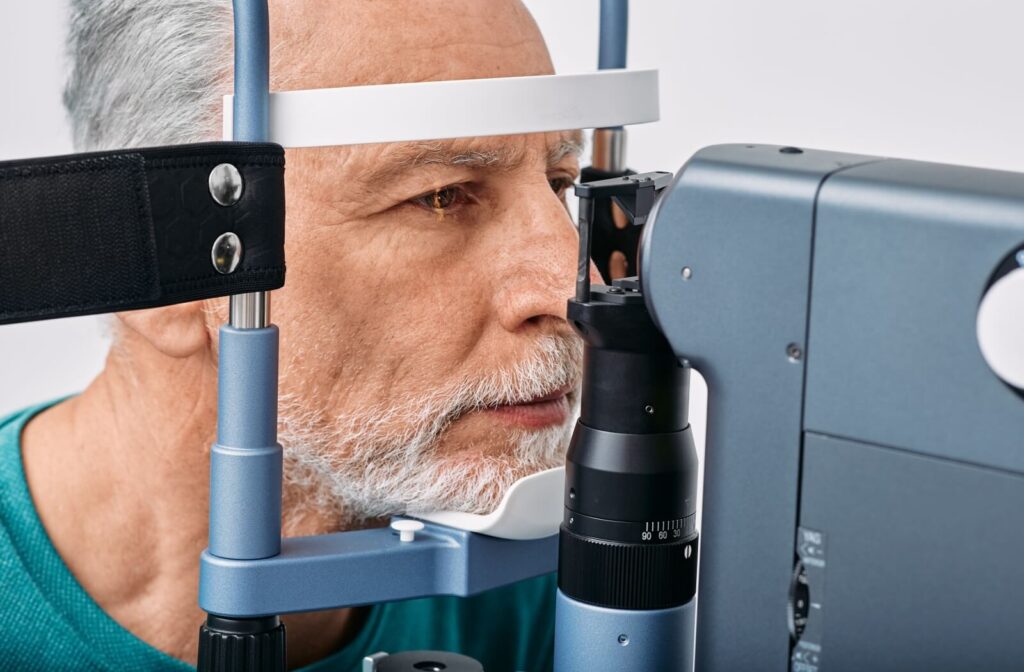Have you ever wondered if eye conditions can run in the family—like high blood pressure or diabetes? While the answer varies, glaucoma in particular does have a genetic component.
If someone in your immediate family has been diagnosed with glaucoma, taking proactive steps can help. Catching it early can make a big difference—with regular eye exams and personalized care you can protect your vision long-term.
What Is Glaucoma?
Glaucoma is a group of eye diseases that can quietly damage your optic nerve. This damage is often linked to higher-than-normal pressure inside your eye, and over time, it can cause permanent vision loss. That’s why catching glaucoma early makes such a big difference.
Glaucoma isn’t just one condition—it comes in several forms, each with its own symptoms and risks. The most common type, primary open-angle glaucoma, develops slowly without pain, so it often goes unnoticed until vision loss begins. Other types, like angle-closure or normal-tension glaucoma, may appear more suddenly.
Knowing the signs and staying on top of regular eye exams can help catch glaucoma early and protect your vision over time.
Types of Glaucoma & Their Symptoms
There are 10 known types of glaucoma, but some varieties are much more common than others.
Primary Open-Angle Glaucoma
This is the most common type, making up about 90% of glaucoma cases. It builds slowly over time and typically doesn’t cause pain or obvious symptoms until vision has already been affected. It occurs when the eye’s drainage system gets backed up, increasing pressure inside the eye.
Angle-Closure Glaucoma
Sometimes called closed-angle or narrow-angle glaucoma, this form is less common but much more urgent. It occurs when the iris pushes forward and blocks the eye’s drainage angle. It can come on fast, feel intense, and should be treated as a medical emergency, as it can cause rapid vision loss.
Normal-Tension Glaucoma
Normal-tension glaucoma is a bit different. In this form, optic nerve damage still happens—even though eye pressure stays within the normal range. The exact cause is still being studied, but experts believe both genetics and environmental triggers could be involved.
Risk Factors for Glaucoma
Certain things can increase your chances of developing glaucoma, including:
- Age – Risk goes up after 60
- Family history – A strong genetic link
- Ethnicity – Higher risk among African American, Hispanic, and Asian populations
- Medical conditions – Diabetes, high blood pressure, and heart disease all play a role
- Eye conditions – Severe nearsightedness, past eye injuries, or long-term steroid use
Your Genes & Glaucoma
If someone in your family has glaucoma, your own risk is significantly higher. In fact, first-degree relatives can have 13 times the risk compared to people with no family history.
Researchers have identified a few key genes involved, including MYOC (linked to open-angle glaucoma) and CYP1B1 (connected to congenital glaucoma). But scientists are still learning about all the genetic pieces in this puzzle.
Why Your Family’s Eye Health History Matters
It’s a smart move to talk to your relatives about their eye health. Knowing your family’s history with conditions like glaucoma can help your optometrist build a personalized care plan to protect your future vision.

The Importance of Regular Eye Exams
A good way to catch glaucoma early is through regular comprehensive eye exams. These exams aren’t just about reading letters on a chart—they actually give us a full picture of your eye health. A typical glaucoma screening includes:
- Visual acuity test – Measures how clearly you see
- Visual field test – Checks your peripheral (side) vision
- Dilated eye exam – Gives a clearer view of your retina and optic nerve
- Tonometry – Measures eye pressure
- Pachymetry – Measures corneal thickness
When caught early, glaucoma is manageable—and early detection can help you preserve your vision.
Tips to Help Reduce Your Glaucoma Risk
You can’t control your genes, but you can make lifestyle choices that support long-term eye health.
Eat for Your Eyes
Fuel your body with eye-friendly foods like leafy greens, colourful veggies, berries, and omega-3-rich fish (think salmon and sardines). These nutrients support the health of your optic nerve and may help lower your risk.
Keep Moving
Moderate exercise, like brisk walking or swimming, can help reduce eye pressure and improve circulation. Just check with your eye doctor before starting a new workout, especially if you already have glaucoma or other eye issues.
Don’t Smoke
Smoking is harmful to your overall health—and that includes your eyes. It can increase your risk of developing serious eye conditions like glaucoma, cataracts, and age-related macular degeneration. Quitting smoking is one of the best things you can do to protect your vision.
Take Steps Today to Protect Your Vision
If glaucoma runs in your family, taking action early can make all the difference. While you can’t change your genetics, regular eye exams and ongoing care can help detect glaucoma in its earliest stages—when it’s most manageable.
At The Eye Care Team, we’re here to help you stay informed, understand your personal risk, and feel confident in your eye health decisions. Whether you’re due for a routine exam or have concerns about your family history, we’re ready to support you with compassionate, expert care. Book your comprehensive eye exam today—your future vision starts with a simple step.



